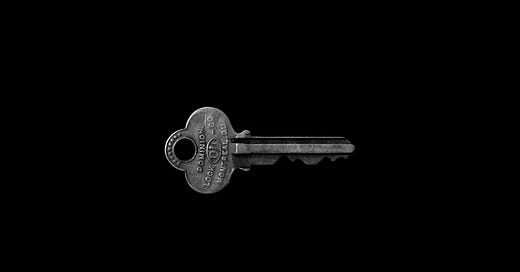I still remember the day my dad showed me just how he really made coins appear from my ears. For years, I’d been convinced there was an invisible, coin-shaped pocket somewhere on the side of my head, from which only paternal figures could make financial withdrawals. Now, here was sleight of hand — revealed, in all its glory. From that moment on, I became fairly addicted to understanding how magic tricks work.
I bought a magic set, “mastered” some basic tricks, and even performed to an audience one evening — during the course of which I dropped my cards, my assistant was so nervous she clutched the beads-on-a-string too tightly for me to magically release them from the handkerchief, and an audience member broke my magic box open with brute force during the “can you verify this cannot be easily opened” part of the trick.
It was a night I’m sure everybody forgot in a hurry.
These days I’ve forgotten all the old card tricks, and magic boxes no longer hold any charm. But on a whim a few months ago, I picked up this collection of “locked-room mysteries” — i.e. mysteries that all seem impossible to solve, given that the crime was committed in a locked room. From Edgar Allan Poe to Wilkie Collins and Sir Arthur Conan Doyle, every single one of them delivers that sweet moment in which the wool is dramatically pulled from our eyes and a new reality revealed.
While some are a little more far-fetched than others (see: Poe’s The Murders in the Rue Morgue), each has a stroke of genius that defies the standard-issue logic buried deep inside our brains. Unless you’ve chosen to exercise this birthright into a formidable power ala Jacques Futrelle’s favoured protagonist, Augustus S. F. X. Van Dusen (a.k.a. The Thinking Machine), the mysteries will escape you until the final page.
What fascinates me most however, is in reading back over the story once the solution has been outed, it’s clear that all the pieces of the puzzle were there — but, usually through the author’s own literary sleight of hand, we were examining them through the wrong lens, without ever noticing.
This is all a frivolous bit of fun of course — and naturally the author’s intent is to misdirect us. But to me, the crumbling of illusion is a reminder that we all too often accept situations in life as “locked room mysteries”. All too often we accept that the lens we are looking through is the only one in existence.
How many times have you said “There is no way that…X ” or “I can’t do…X”? How may times have you felt that there is simply no other way forward but the unappetising one set before you?
The vast majority of people, like the mystery author’s hapless readers, will accept the circumstances laid out before them unquestioningly. To them, there is no other possible angle to examine them from. By way of habit, or preference, or even conditioning, we choose the same paths again and again. How are we to know we aren’t simply choosing to see only the way that appears most obvious? How are we to know it isn’t just habit that is shining a spotlight on the “only way forward”?
But I am yet to come up against a situation in which there isn’t an alternative lurking in the shadows.
It pains me to admit I don’t always look for it, preferring to gripe and moan about “the way things are” instead of looking for a way they aren’t. It’s easier — for a while at least. When I finally tire of it though, I remind myself that every locked room mystery has a solution…more often than not, a dazzlingly simple one.
What beautifully simple solution could be around the corner for you?




